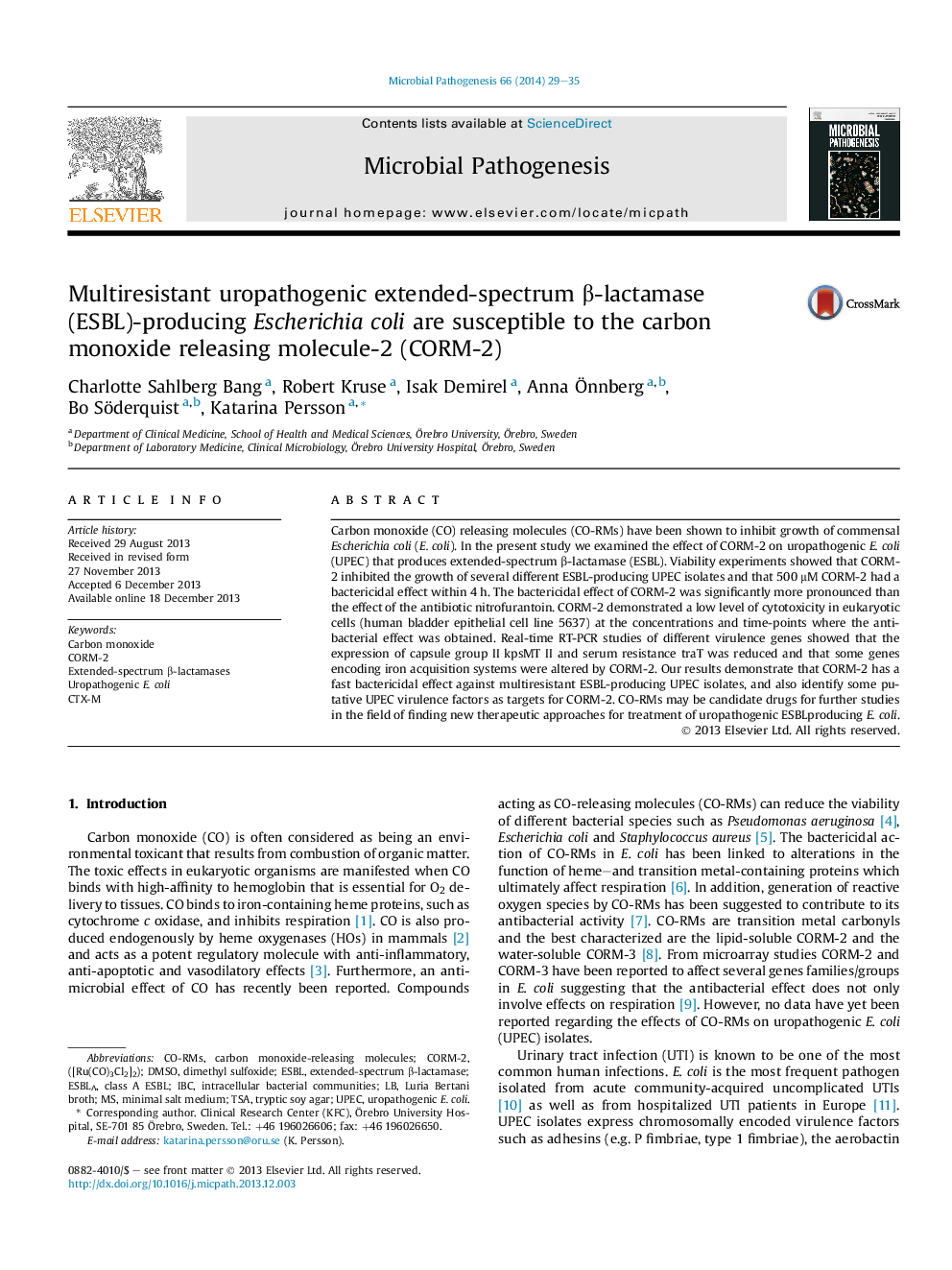| Article ID | Journal | Published Year | Pages | File Type |
|---|---|---|---|---|
| 3416669 | Microbial Pathogenesis | 2014 | 7 Pages |
•The effect of the compound CORM-2 was examined on ESBL-producing UPEC isolates.•A bactericidal effect was found within 4 h.•CORM-2 caused reduced expression of the virulence genes kpsMT II and traT.•Some genes encoding iron acquisition systems altered their expression by CORM-2.•CORM-2 has a potential as an antimicrobial agent against ESBL-producing UPEC isolates.
Carbon monoxide (CO) releasing molecules (CO-RMs) have been shown to inhibit growth of commensal Escherichia coli (E. coli). In the present study we examined the effect of CORM-2 on uropathogenic E. coli (UPEC) that produces extended-spectrum β-lactamase (ESBL). Viability experiments showed that CORM-2 inhibited the growth of several different ESBL-producing UPEC isolates and that 500 μM CORM-2 had a bactericidal effect within 4 h. The bactericidal effect of CORM-2 was significantly more pronounced than the effect of the antibiotic nitrofurantoin. CORM-2 demonstrated a low level of cytotoxicity in eukaryotic cells (human bladder epithelial cell line 5637) at the concentrations and time-points where the antibacterial effect was obtained. Real-time RT-PCR studies of different virulence genes showed that the expression of capsule group II kpsMT II and serum resistance traT was reduced and that some genes encoding iron acquisition systems were altered by CORM-2. Our results demonstrate that CORM-2 has a fast bactericidal effect against multiresistant ESBL-producing UPEC isolates, and also identify some putative UPEC virulence factors as targets for CORM-2. CO-RMs may be candidate drugs for further studies in the field of finding new therapeutic approaches for treatment of uropathogenic ESBLproducing E. coli.
